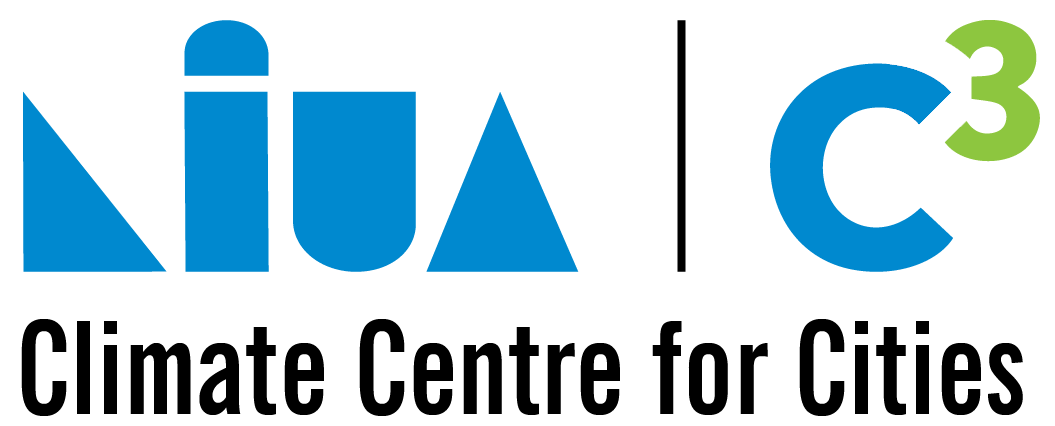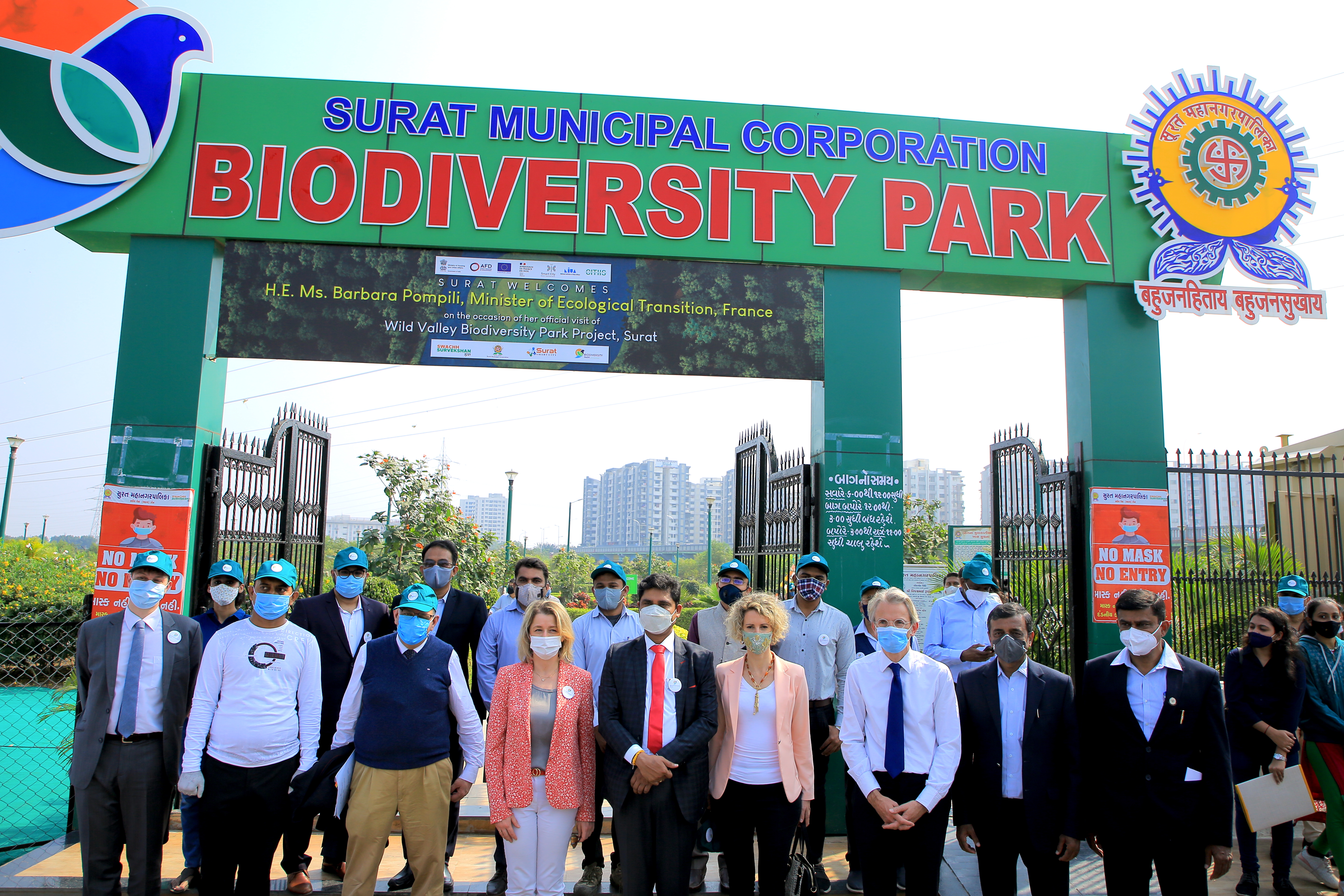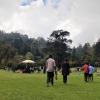PLANNING GREEN CITIES WITH CITIIS
Published On:
Thursday, June 3, 2021
‘Green Planning’ is the necessary tool to achieve the goals of sustainable development and reduce global carbon emissions. It aims to replace conventional planning methods with alternative planning approaches to safeguard the environment – an approach to manage the resource consumption and emission production patterns.
Cities are the most vulnerable spaces to be affected by climate change. They occupy only 2 percent of geographical land area, but are accountable for 70 percent of carbon emissions. In 2015, countries around the world have adopted ‘Agenda 2030 for Sustainable Development' and agreed to meet 17 goals by the year 2030. Subsequently, the Paris Agreement was signed to achieve overall mitigation of global emissions and limit the rise in global average temperature to less than 1.5 centigrade threshold above the pre-industrial levels. Commitment to green planning is enabling countries to have a rapid progress towards sustainability.
Many countries such as Singapore, New Zealand, Canada, Mexico, France, Sweden and Netherlands are already on the path of green planning. They have formulated comprehensive action plans, known as ‘Green Plans’, to reduce the carbon footprint and have a better and greener future. Green plans are formulated with environmental targets in multiple sectors such as traffic and transport, land utilisation, industries, agriculture, energy etc. and develop strategies to achieve them.
Various other nations have committed for green planning to take significant actions towards promoting clean energy, developing green neighbourhoods; promoting walking, cycling and public transport; freezing the growth of vehicular population; achieving net-zero emissions; aiming for zero waste society with high rates of recycling and re-use; conserving water resources and so on.
For India, it is important to achieve green growth while simultaneously achieving economic prosperity. Although India is yet to formulate a ‘Green Plan’, many research projects by various non-profits have done enormous work to bring about policy changes in various sectors for environmental sustainability. Recently, Government of India has announced its idea to develop a ‘green city’ in every state of the country.
Promoting the adoption of renewable energy, these cities will have all the houses installed with solar energy, have electric mobility enabled public transport systems, solar parks and waste to energy treatment plants and so on. This idea of developing a pilot project in every state might give a way for other cities to grow green in a similar way.
The Cities Investments to Innovate, Integrate and Sustain (CITIIS) programme has approached the projects with its innovative maturation phase approach during the project design phase. This is primarily to consider over all dynamics of the project which includes citizen participation, consideration of the environmental & social aspects, development of monitoring & evaluation plan along with the baseline, feasibility and detailed project report. Five projects are being implemented under the theme of ‘Public Open Spaces’.
These projects include (1) Howrah River Front Development (Phase-II) at Agartala (2) B-Active (Be Active or Bhubaneswar Active) at Bhubaneswar (3) Green Mobility Corridor at Hubballi-Dharwad (4) Mahakal Rudra Sagar Integrated Development Approach Phase – II at Ujjain and (5) Creating ‘Wild Valley Bio-Diversity Park’ as City Lungs by Rejuvenation of Existing Wasteland along the Kankara Creek at Surat.
The larger idea of the project is inclusion of green planning cross the various components of the project. Each of these cities are contextually addressing the green aspects in their projects. For example, Surat has envisioned to rejuvenate and sustainably develop the project in existing wasteland along with the creek. The project has been subdivided the project under different zones including recreational park, wild valley biodiversity park, urban theme forest and children park, based on activity and suitability. Surat has planned to plant total of 6 lakh plants under the project which will be of 85 different native species available locally. The idea is to create a natural habitat for flora and fauna with increase in green cover. Soil and water remediations will be take care off by the use of Bioremediation/phytoremediation. The innovative approach of ‘Miyawaki’ method of plantation has been adopted for the project.
In the city of Agartala, the larger objective is restoring the city’s relationship with the river, establishment of blue-green corridor, conservation and creation of livelihood opportunities with promotion of organic farming. The project primarily intends to utilize the large defunct urban open space and enhance per capita green space in the city. The project has been developed with extensive stakeholder consultation and consideration of all environmental and social aspects. Under the project, approximately 18 Acres of green spaces will be created along with 700 metres of bicycle lane and 2,000 meters of green walkway along the river. Most of the existing native trees and bamboo plantations have been integrated in overall design of the project.
At Hubballi-Dharwad, the Green Mobility Corridor aims to connect the major roads with cycle tracks with an aim to encourage cycling and pedestrian movement (non-motorized transportation) across the corridor. The proposed project is along the Unkal Nala which is 9.25 kms long drainage channel in the city. Along with cycle track and walkway, it will create green cover and recreational space along with the economic activities such as public parks, outdoor gym, children’s play, amphitheatre etc. Post implementation there will be improvement of existing storm water flow which will strictly adher to sewage water disposal standards and solid waste management. The designs include correction of Nala section along with create the corridor as vibrant public utility corridor.
The B-Active project at Bhubaneswar envisages to create healthy, active and inclusive communities by developing vibrant public spaces. The project is spread across 10 sq. kms. has components and interventions that are interwoven to create a comprehensive and sustainable ecosystem. The project is focused on the 5 components of streets, water, parks & open spaces, sports & playground and heritage sites. The project development considered the larger vision of revitalizing the water ways, reuse the landscape, reclaim the public spaces and raise the profile of organized sports and active recreation.
Across all the projects the constant factor is contextualization of the solutions with accordance to the need and vison of the project. Each of the project approaches the solutions based on feasibility and availability. During the maturation phase, numerous discussions and alternative solutions were explored so that the best suitable options can be applied to achieve intended objectives. Green planning and sustainability is at the core of the project development.
Objective approach and contextualization is the key to successful green planning for any urban project in biodiversity, green corridors, non-motorized transportation, water bodies, and open spaces etc. The green planning approach will eventually contribute to larger environment and climate change at large.
About CITIIS programme:
The City Investments to Innovate, Integrate and Sustain (CITIIS) program is conceptualised to assist Indian cities in implementing urban infrastructure projects that are integrated, innovation driven and sustainable. The selected projects will improve sustainable mobility, increase the amount of public open spaces, implement technology to improve e-governance and drive social and organizational innovation in low-income settlements.
The program combines financial assistance through loans and technical assistance through grants to the selected cities. This assistance focuses on strengthening institutions by committing resources to systematic planning (maturation phase) before implementation, by developing results-based monitoring frameworks and by adopting technology for program monitoring.
CITIIS is supported by the Ministry of Housing and Urban Affairs (MoHUA), Agence Française de Développement (AFD) and the European Union (EU). The aim of the project is to provide financial assistance by way of grants and technical assistance through international and domestic experts. The project is being coordinated and managed by the Program Management Unit (PMU) at the National Institute of Urban Affairs (NIUA) in New Delhi. Read more at https://www.niua.org/citiis/
Contact Us
1st and 2nd Floor, National Institute of Urban Affairs
India Habitat Centre Lodhi Road New Delhi-110003
Please Call Help Desk at 011-411-86699
Monday - Friday, 9:00 AM - 5:00 PM
Please write to us at c-cube@niua.org







Post a Comment